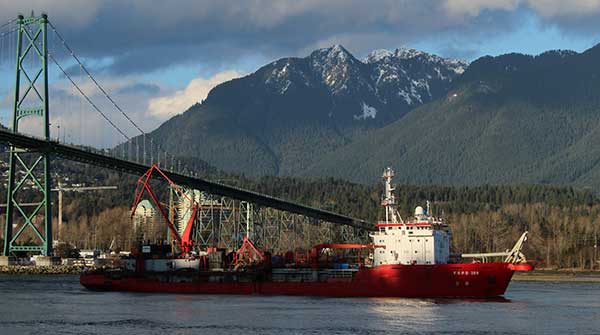The labour discontent represents an unmistakable sign of a shift towards greater worker demands
 Apparently, friendship has its limits. Federal Labour Minister Seamus O’Regan – who styles himself as a friend of workers – announced on July 29 that he was beginning the process to break the strike at the Port of Vancouver. Here, friendship’s limit is when labour begins to assert itself and make demands.
Apparently, friendship has its limits. Federal Labour Minister Seamus O’Regan – who styles himself as a friend of workers – announced on July 29 that he was beginning the process to break the strike at the Port of Vancouver. Here, friendship’s limit is when labour begins to assert itself and make demands.
The striking Vancouver dock workers – members of the International Longshore and Warehouse Canada Union (ILWU) – had been on strike for around two weeks. They’re demanding wage increases that beat inflation. The union and the employer had reached a tentative agreement in mid-July, but the workers rejected the deal and demanded more. That’s when the federal government stepped in.
It’s uncommon for rank-and-file union members to reject tentative agreements that leadership endorses. The workers sent a signal that their expectations for this contract were higher than the leadership believed and that they were willing to fight for them.
The same day as O’Regan threatened dock workers, thousands of Metro grocery store workers walked off the job and shut down supermarkets across Toronto. Those workers, like the dock workers, had rejected a previous tentative agreement and decided to fight it out for bigger gains.
Why are workers demanding greater wage increases, from both their employers and their unions?
If you’ve been to the grocery store over the past year and a half, you know why these workers are fed up. The cost of everything, especially essentials – food, gas, housing – is through the roof. In fact, the Bank of Canada decided that the only way to bring inflation down is by cranking up interest rates, which will likely trigger a “minor” recession, to cool things down.
For workers, that means there’s no relief coming – nothing other than what they can win through wage increases. So they’re fighting for it and raising their expectations of what constitutes a minimally acceptable deal. We’re in something of a “perfect storm” moment for workers’ action. These ongoing strikes may constitute the first cracks in decades of labour peace.
Of course, this didn’t happen spontaneously. Along with the cost of living crisis, it’s also the result of workers organizing on the ground.
The labour movement has been undergoing a re-orientation across North America. It began, roughly, with the wave of wildcat teachers’ strikes that swept the United States starting in 2016 and peaked in 2018-2019. It continued through union breakthroughs at companies like Starbucks and Amazon. And it crept into Ontario, teetering on the edge of a wildcat general strike against Bill 28 last November.
Workers are organizing themselves, and they’re learning from one another’s organizing campaigns. The labour movement is starting to feel a bit like a movement again.
Those winds have also shaken up the leadership in a lot of big established unions – from the Teamsters to Unifor to the United Auto Workers to the Ontario Federation of Labour, union leadership is also undergoing a renewal. Many of the new leaders are coming to power on promises to work their unions’ fighting muscles.
The combination of these factors – a tight labour market, a cost-of-living crisis, and a wave of new energy into organized labour – means we should expect more strikes like the one at the Port of Vancouver and Metro grocery stores around Toronto. Workers feel emboldened to ask for more and are taking action to address the cost of living crisis. The federal government can issue all the threats it wants, but those threats won’t change the facts on the ground.
Jon Milton is a senior communications specialist with the Canadian Centre for Policy Alternatives’ national office.
For interview requests, click here.
The opinions expressed by our columnists and contributors are theirs alone and do not inherently or expressly reflect the views of our publication.
© Troy Media
Troy Media is an editorial content provider to media outlets and its own hosted community news outlets across Canada.


